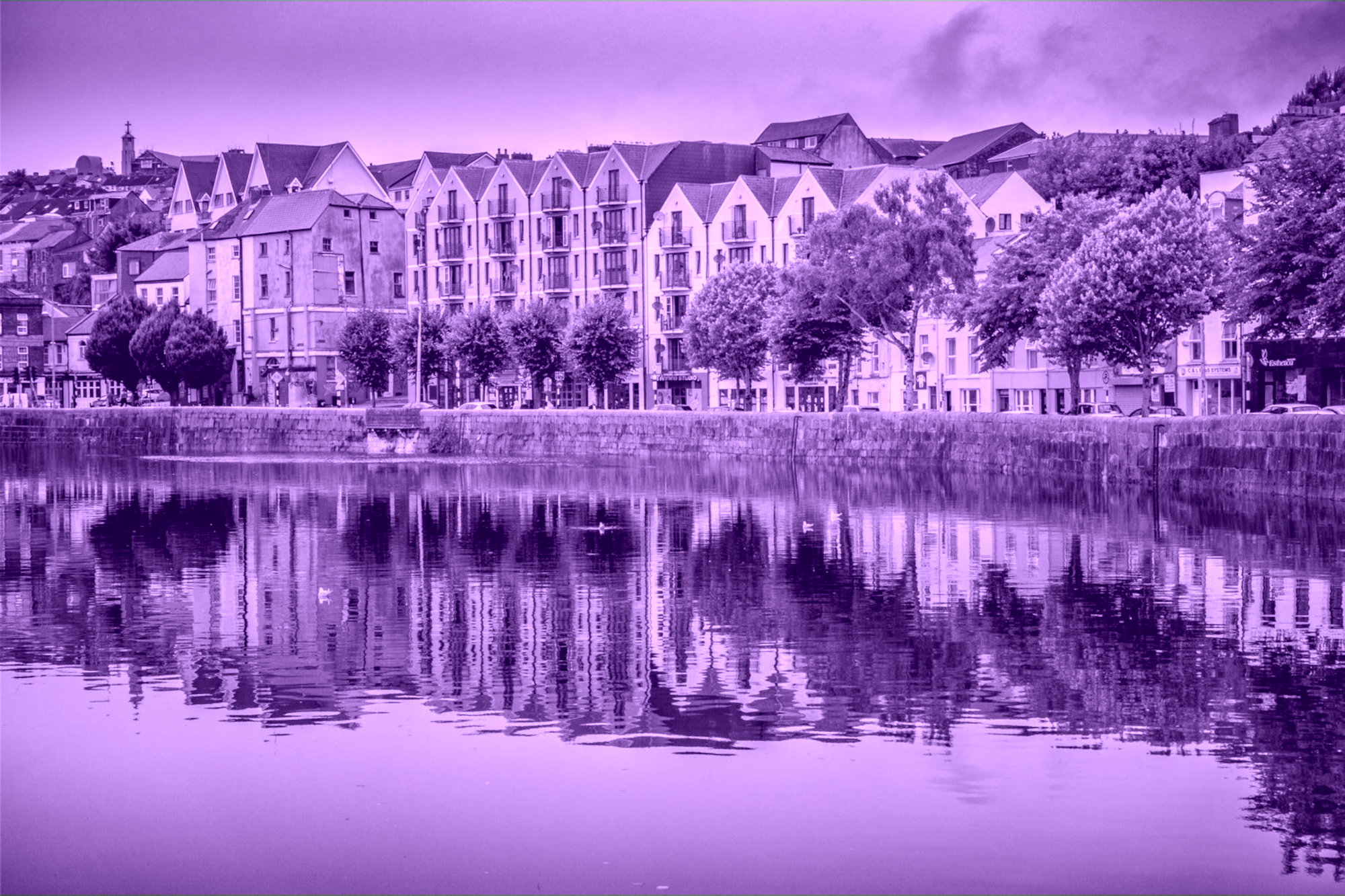Urban Redevelopment
Covid-19 has cast a light on flaws and inefficiencies in our societies regarding how we structured many aspects of our daily lives. This became particularly obvious in cities. When the whole country went into the first lockdown at the beginning of the pandemic, city centres across the country lost their liveliness. Remote working significantly reduced commuting journeys and entire business districts were suddenly transformed into ghost towns. The tourism and hospitality sectors were completely shut down which further reduced footfall. Traffic pretty much disappeared altogether for a few weeks.
Mobility
Seeing all those empty roads and abandoned car parks many started to wonder how this free space could be used differently. Many European cities used their respective lockdowns to either set up bicycle lanes or pedestrianise wider parts of their city centres.
Ireland has somewhat missed this trend with the exception of Cork where plans were announced to pedestrianise 17 city centre streets to create outdoor spaces. It would be great to see similar bold efforts in Dublin and Galway. Our goal should be to create walkable and cyclable, environmentally friendly cities which will in turn create sustainable, healthier, and more liveable communities.
In order to achieve this, cities need to rethink their current zoning model: Splitting cities into separate zones for living, shopping, and working too often leads to isolated areas that will never create a strong community because too many people only drive into the city for work or leisure, and leave again for the suburbs, instead of actually living in the city centre. A lack of inadequate public transport to link the different areas leads to high car dependency and congestion which results in high CO2 emissions. However, the transport sector will have to play a significant role in reducing Ireland’s overall carbon emissions.
According to the 2020 TomTom Traffic Index, Dublin was the most congested city in Western Europe, and the 21st most congested city in the world. Unsustainable levels of traffic are not only a problem in the capital but also in Cork and Galway. Similarly, there is an abundance of car parking in all major Irish cities. Ireland has about 400,000 car parking spaces; and all major Irish cities have a high number of multi-storey car parks, very often in prime locations: eight in Galway City, ten in Cork city and around 20 in Dublin city centre.
The 15-minute city
Many European cities have started to repurpose their multi-storey car parks as they are moving away from a previously similarly strong focus on cars. There are car parks that are being used for urban farming or as rooftop gardens, some are converted into depots for inner-city deliveries, and others are even transformed into apartments, markets, and retail or art spaces.
The concept of the car-friendly city of the 1960s and 1970s has failed. Giving cars access to almost every street will always lead to congestion and signifies an enormous waste of space that could be used to create more sustainable and more vibrant communities instead.
If we want to shift from car dominance to more active and public transport, we need to reimagine our cities as places where people can live, work, and enjoy their free time without having to travel across the entire city. When looking at the historic cores of European and Irish cities everything was found together in one place.
This concept is currently again growing in popularity across Europe under the slogan of the 15-minute city or the city of many centres. It’s based on the idea that, in a city, people should be able to make the majority of their journeys within 15 minutes on foot, by bike or by public transport. Everyone should find all necessary services and facilities within 15 minutes from their own home. Here again, former car parks could be crucial in rejuvenating and densifying city centres. Similarly, cities might soon need to have a conversation about how to re-purpose vacant office buildings as a consequence of remote working.
Let’s rebuild our urban heritage
In the recent debate around high-rise buildings in Dublin and other Irish cities one thing has become clear. Regardless of if we want to build high-rise buildings in city centres or focus on the densification of suburbs through mid-rise developments, we need to build more densely and reduce urban sprawl.
Dublin currently has a density of 37 people per hectare compared to the European average of 78 pph. Other Irish cities have similarly low figures. This shows that there is a huge potential for population growth within current city boundaries.
Denser living in return enables shorter ways which makes sustainable transport more valid and helps to create overall greener communities with less emissions. To successfully densify Irish cities, we need an affordable and efficient first-class public transport system, further pedestrianisation, and the introduction of park-and-ride facilities to allow access into our cities.
When talking about urban (re-)development and densification this includes the rejuvenation of smaller towns, where remote work should be seen as an opportunity for communities to reinvent themselves.
To achieve this, we urgently need to address the high levels of dereliction in Irish towns and cities. There are simply too many buildings lying vacant or dilapidated which is unacceptable in a time of high levels of homelessness and unaffordable housing due to a dysfunctional market. The Government could on the one hand create incentives for people to bring vacant buildings back to the market, and on the other hand tax property hoarding.
To rejuvenate our towns and cities, we need to create opportunities for people to actually live there instead of just visiting for a few hours. Cities are the centres for human civilisation and innovation: they are the places where people mingle, exchange ideas, collaborate, and learn; and they are places of cultural and societal transformation. Post-Covid we will need a bold and innovative approach to how we live and work in an urban context, and we need to transform our society to tackle climate change.

